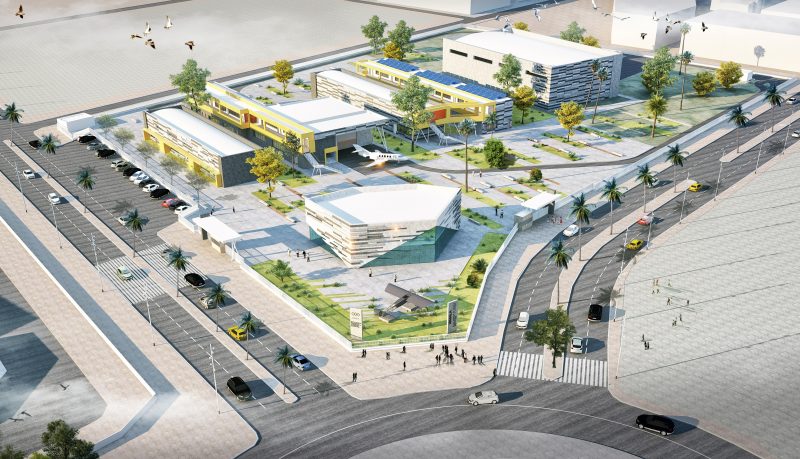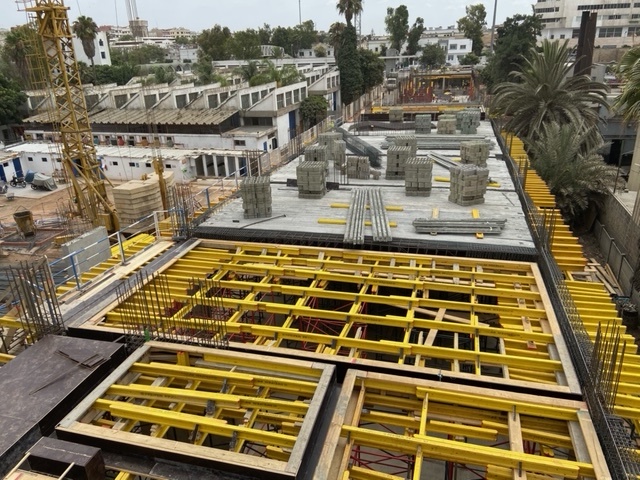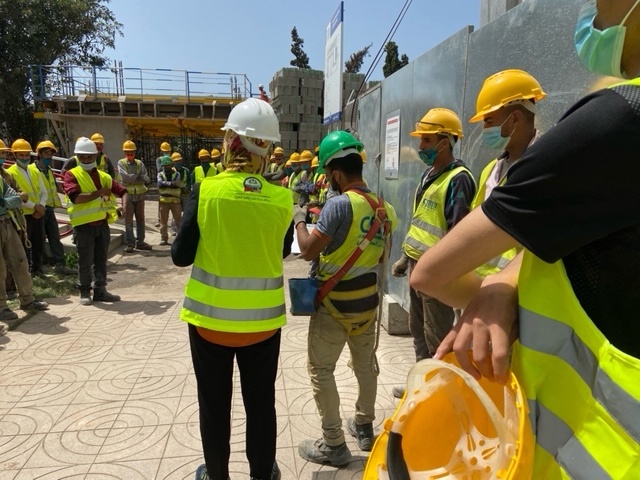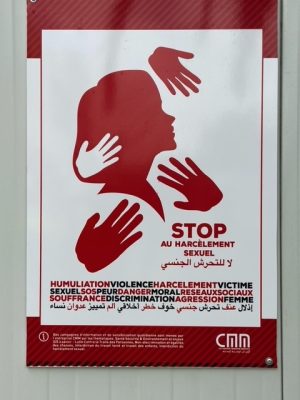
Architectural rendering of an expanded aeronautical maintenance and logistics training center in Casablanca, Morocco, one of fifteen funded by the Morocco Employability and Land Compact.
As part of the compact, new and expanded TVET centers are now under construction at 15 different locations across Morocco. These centers will provide facilities and equipment in a range of sectors, including traditional artisan crafts, shipping/logistics, building trades, health services, and tourism. The design of this program is guided by lessons that MCC has learned from TVET investments around the world, which are captured in MCC’s Training Service Delivery for Jobs & Productivity Principles into Practice paper, issued in 2020.

Construction progress photo showing concrete masonry and reinforced concrete forms for expansion of the Institut Supérieur du Bâtiment ISB in Casablanca.
TVET Infrastructure Under the Charaka Fund
The new TVET centers under construction are part of a comprehensive and innovative workforce development activity intended to increase the quality and relevance of technical and vocational education and training in Morocco. In addition to constructing and rehabilitating centers, the activity is making targeted institutional reforms, investing in training and capacity-building for instructors, and piloting new, private sector-driven approaches to TVET governance and management. A consortium of public and private partners from existing or new TVET centers applied through a competitive grant fund called the Charaka Fund (the Arabic word “charaka” roughly means “partnership” in English) to be included in the program. In 2018 and 2019, MCA-Morocco awarded 15 grants to new or existing TVET centers located throughout northern Morocco.
Construction workers attend a safety briefing the Institut Supérieur du Bâtiment ISB in Casablanca.
Embracing Collaboration Essential to Achieving Tangible Progress
[caption id="attachment_54069" align="alignnone" width="300"]
Briefings included anti-harassment policies and notification procedures for workers at the expansion of the Institut Supérieur du Bâtiment ISB in Casablanca.
[/caption]Construction of the centers provides tangible progress evident on the ground each week. The teams intend to maintain momentum through the end of the compact term and look forward to watching these centers open to enroll the first cohorts of new students over the next year.
By supporting policy and institutional changes that will improve Morocco’s investment environment, and creating models for engagement with the private sector, the compact aims to address both the supply and demand sides of the labor market. All told, the Morocco Land and Employability Compact is expected to benefit more than 800,000 Moroccans over the next 20 years.
To learn more about this part of the Morocco Employability and Land Compact, check out this statement by one of the co-authors during a recent travel mission to Morocco, and an overview of how MCA-Morocco integrates gender and social inclusion into compact implementation, including TVET infrastructure under the Charaka Fund.

